Pruning geraniums at home in autumn and spring, rules for forming a bush
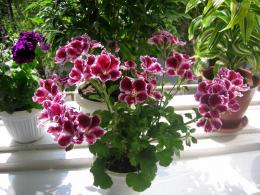
In order for pruning of geraniums at home to be successful and ensure lush tillering and flowering, you will have to spend very little effort.
This plant is unpretentious and stable, so even a novice gardener can form a bush.
Content:
- Why do you prune geraniums?
- Autumn and spring pruning of geraniums at home
- Rules for pruning, features of pruning different varieties
- Crown formation
- Is it possible to prune flowering geraniums?
- How to prune geraniums to make them bloom, video
- How to remove faded geranium flowers
- Geranium has faded, what to do?
- Causes of abnormal growth: geraniums are thin and long
Why do you prune geraniums?
Like many similar species, geraniums often stretch without pruning. This not only significantly worsens the appearance of the bush, but also negatively affects its condition. Too much effort goes into maintaining the growth of long branches.
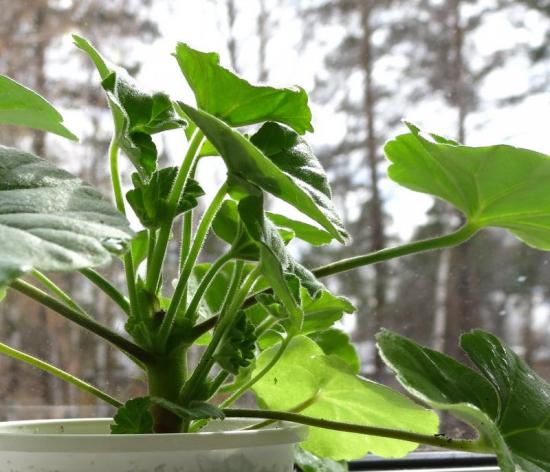
In addition, there is a danger that the branches may break.
In order to protect the plant from possible unpleasant consequences, it is enough not to lose sight of the length of its branches and systematically prune.
Timely regulation of the size of shoots will help stimulate the growth of lateral branches. It is important to consider that without pruning, the growth of additional shoots is almost impossible, despite the large number of dormant buds.Only mechanical removal of part of the plant can start them to grow.
In addition to preventing stretching, timely and regular pruning promotes the formation of a neat crown, activates flowering, and makes it lush.
Cut parts are excellent planting material. So it is enough to place the cuttings briefly in a container of water and wait for it to take root.
Stopping the upper branches is an important procedure for the normal growth and development of the bush. If carried out systematically, this event will significantly improve the condition of the flower.
Autumn and spring pruning of geraniums at home
Spring pruning includes cosmetic and health-improving ones. After the winter period, it is recommended to examine the plant for dried parts that need to be removed. Branches that have become too long are also pruned, thus preparing the bush for the summer season.
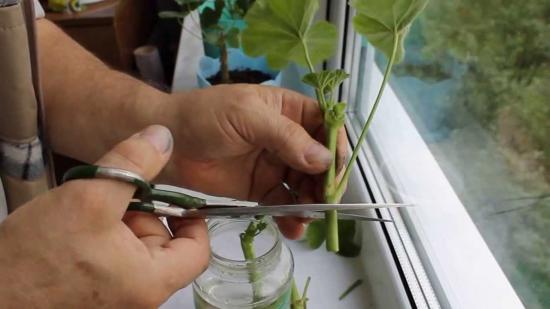
Much more extensive activities are recommended to be carried out in the fall, it is necessary:
- Remove dry and damaged parts;
- Cut off the branches that have begun to grow inside the bush. This will prevent shading of the root area;
- Shoots that have managed to lengthen over the summer should be cut off by a third, leaving at least a few leaves on the branch.
- In addition to the aesthetic side of the issue, it is important to consider that it is in the fall that it is best to harvest seedling cuttings. Young seedlings planted in this way will not only quickly grow, but will also delight their owners with lush flowering by spring.
Rules for pruning, features of pruning different varieties
There are three type of geranium, each of which differs in size: dwarf, medium-sized and tall.Varieties of these species can be either similar or radically different in size and characteristics of buds, leaf blades and stems.
When pruning different varieties, it is important to consider some features:
- If the variety belongs to the dwarf variety, it is recommended to pinch the young plant and continue to ensure that the internal branches do not shade the root area;
- If it is a medium-sized plant, it is important not only to carry out systematic pruning to form the crown, but also not to allow it to stretch out and grow too much;
- If the variety can be classified as tall, special attention should be paid to regulating flower growth. In this case, it is recommended not to remove the branches that grow from the main trunk, but to trim them, activating tillering. This way the shoots will not stretch too much, which is a significant advantage from an aesthetic point of view.
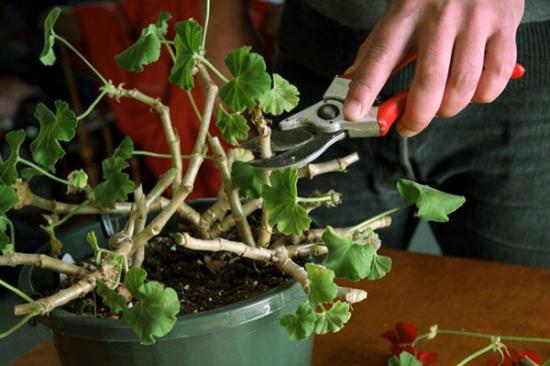
When pruning any variety, it is important not to touch those branches that grow from the root. Only those growing from the trunk can be removed or trimmed.
Let's watch a video on how to prune geraniums correctly:
Crown formation
Before starting formative pruning, it is recommended to pay special attention to the tools. So, the knife or scissors must be sterile.
Next you need:
- Remove dry and damaged parts first;
- Cut off the top of the main stem to stimulate the growth of lateral shoots;
- If the top part has already been cut off, cut out those branches that have begun to grow inside the bush and remove the lower side shoots;
- After the procedure, carefully treat the cut areas with ground activated carbon.
When pruning, it is important not to cut off too much, as this will negatively affect flowering.So it costs no more than a fifth to cut.
Is it possible to prune flowering geraniums?
This question worries gardeners, because often the flowering period for plants is not the best time for active activities with them. Geranium, despite its persistence and unpretentiousness, is no exception. It is best to wait until the plant has finished blooming and then move on to action.
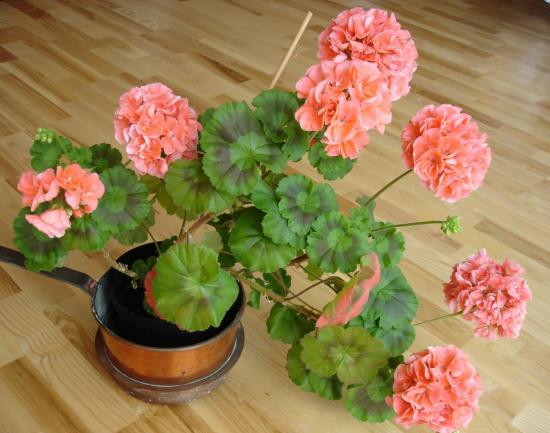
However, if there is no choice, you can trim, but not more than a few branches. The loss of a larger quantity can negatively affect the condition of the flower and its appearance. After trimming, it is imperative to treat the cut areas with activated carbon. At the same time, if the cut branch has a bud, it must be removed so that it does not interfere with the rooting of the cutting.
Cutting shoots for seedlings during flowering is possible, but not advisable. It is better to wait until the plant has finished flowering and begin scheduled pruning, then you can prepare a huge number of young seedlings for further propagation without harm to the mother plant.
How to prune geraniums to make them bloom, video
Systematic pruning not only improves the appearance of the shrub, increases its aesthetics, helps to rejuvenate, but also stimulates the flowering process.
So the inflorescences on a flower that is systematically pruned are much larger, they last longer and look better than on a plant that grows without care.
The main goal of any pruning is to improve the access of water and oxygen inside the bush, which also has a beneficial effect on flowering.
It is so important to first remove all those sprouts that are directed inward.
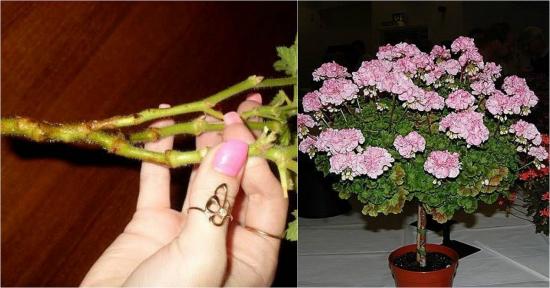
In order for pruning to be as beneficial as possible for flowering, it is recommended:
- Carry out mandatory autumn pruning after the plant has flowered in the summer.It is important to take into account that it is important to carry it out in the fall, and not in the winter. Removing excess branches in winter is strictly prohibited, since the flower is already weak at this time. Additional stress can simply destroy it beyond the possibility of recovery;
- Carefully consider the sequence of the procedure and be sure to prepare sterile scissors. First of all, it is necessary to remove dry, old and yellowed leaves. This will help reduce energy consumption;
- Cut off excess parts. So, if a flower has put out extra branches, it is recommended to cut them off at the first leaf node;
- Cut off the buds that form on the plant in winter. This will help the geranium gain more strength before summer flowering, which will be much more lush and abundant if the flower does not waste its strength during the dormant period;
- At the end of February and until mid-March, prune to form new buds. After this, the geranium will bloom later than usual, but the inflorescences, their number and duration of flowering will be large;
- Consider the size of the bush. So it is not recommended to cut a large one too radically, this can completely deprive it of its strength and you won’t be able to wait for flowering at all. But a small bush should be pruned thoroughly, this will only be a plus.
There are a huge number of videos of correct trimming on the Internet; before starting the event, it’s worth watching a few, this will help you understand the scheme and avoid mistakes:
How to remove faded geranium flowers
One of the main reasons why it is worth removing inflorescences that have faded is the aesthetic side of the issue. Dry “earrings” of flowers do not decorate.
However, timely removal of faded inflorescences can stimulate the growth of new ones.
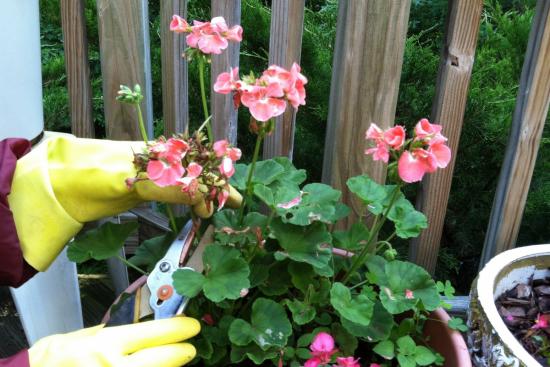
It is recommended to remove the bud immediately after it begins to fade.
You can notice this by the petals, which change color and become covered with brownish spots. It is important not to miss this moment, because if you hesitate, you can wait for the seeds to form.
It is worth removing by cutting with sharp scissors, not necessarily the entire inflorescence at once, you can do one flower at a time as they dry.
Another important advantage of timely removal is the prevention of the formation and development of fungal diseases. The latter is especially important in the case of high humidity levels.
Geranium has faded, what to do?
If you want to stimulate further flowering, cut the flowers before they dry out. The main goal of geranium is to form seeds as a result of flowering; if this cannot be achieved, flowering is repeated.
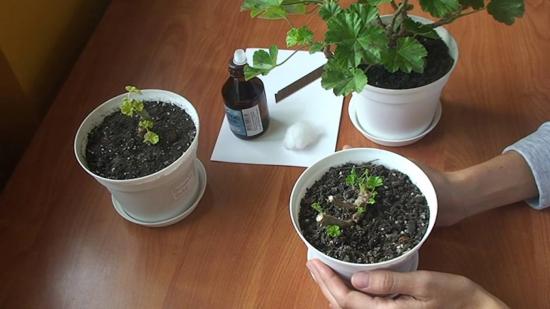
It is also important to take into account that the plant takes too much energy to develop seeds. Nutrients that could be used for the growth and development of the flower are used for the formation of seeds.
In the process, flowering either stops completely or is reduced to a minimum.
Timely cutting of buds helps to activate the process of re-formation of new ones. In addition, it helps reduce energy losses.
Causes of abnormal growth: geraniums are thin and long
There are several reasons for improper development and growth of a flower.
The main and most common ones include:
- Lack of light leads to elongation of shoots. Light is the only thing you should pay attention to when caring for a plant.
- It is worth monitoring the flower especially closely during the cold season; it is recommended to constantly move it to illuminated places or use additional sources of artificial lighting.
- At the same time, it is important not to forget in the spring, on the contrary, to remove it from direct sunlight, which can leave burns on the foliage;
- It has not been replanted for too long, while it is recommended to replant the young one every year, gradually increasing the intervals to once every few years.
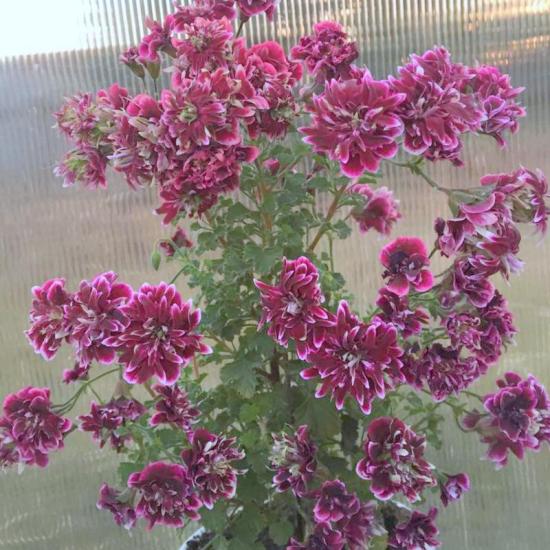
When pulling, it is important to correct the problem in a timely manner, otherwise the risk of damage increases. So the plant can break, unable to withstand its weight.
Pruning geraniums at home is an important procedure that is not recommended to be ignored. If carried out in a timely manner, it will significantly improve the condition of the flower.


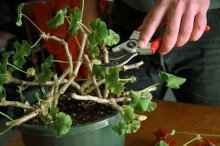

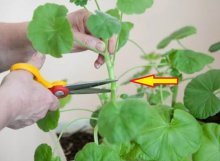


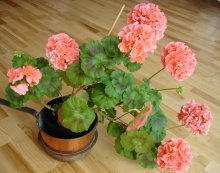
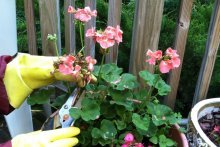
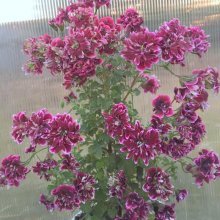
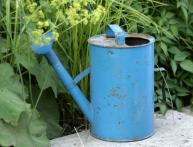

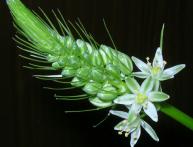



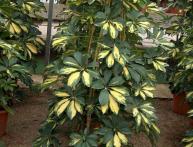

Comments
We have geranium growing in our room, but I have never trimmed it yet and the flowers actually grow on long branches, which is not pretty. In addition, the plant, if touched, has a rich smell and when pruning, it is better to take the geranium out to the balcony.
I have geraniums on my terrace almost all year round, except for the very cold months. A very resistant plant, but you really shouldn’t overdo it with pruning; it’s extremely undesirable to prune a flowering plant; you can easily ruin even a seemingly strong bush. Therefore, if the geranium has already bloomed, then tie it up and wait until it fades.